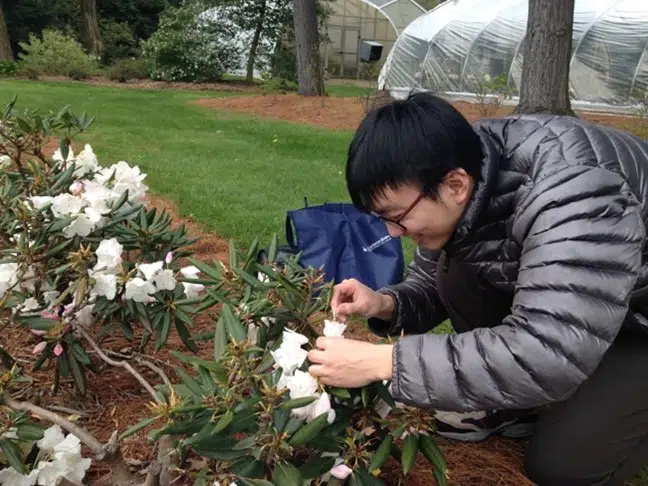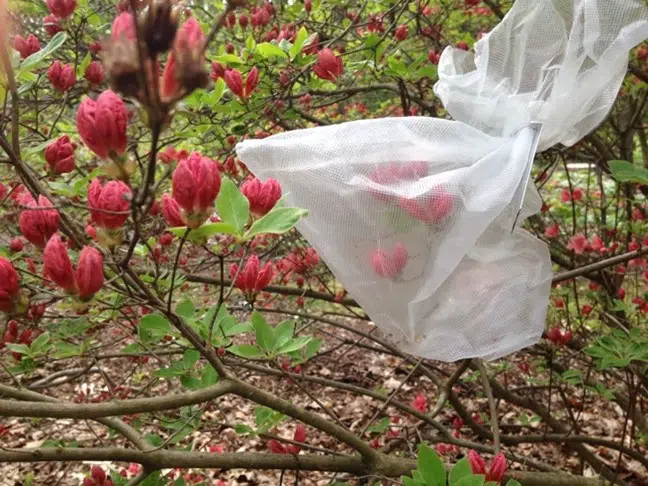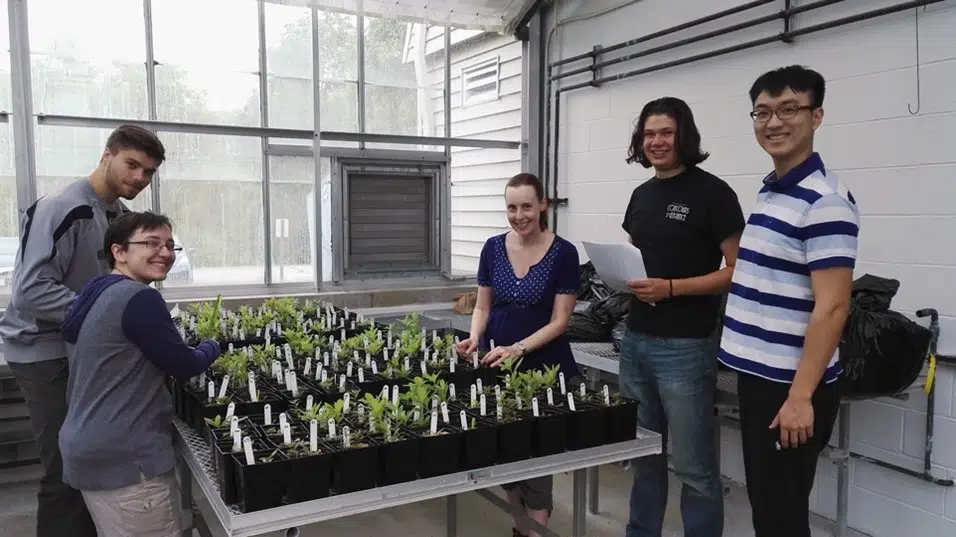
Why public gardens are both beautiful and useful too.
Jean H. Burns, Associate Professor, Department of Biology, Case Western Reserve University
If you have walked around Holden Arboretum in the last few summers, you may have noticed white pollination bags on some of the Rhododendrons. The Rhododendron gardens are not only beautiful to walk through, they are also a valuable scientific collection of diversity from all around the world! The National Science Foundation has awarded the Burns lab a grant, which takes advantage of this amazing collection (DEB 2217714). We are exploring the mechanisms that allow some plants to thrive under stressors, like disease, drought, or flooding. Understanding these mechanisms is becoming ever more important as climate changes threaten global food security.


By bagging and hand pollinating flowers, we can collect seeds for scientific experiments with known parentage. Rhododendrons hybridize easily, and bagging the flowers before they open keeps pollinators out, so we know who the parents are for each seed. This allows us to create experiments where we grow seedlings, and we know what species we have in the experiment.


What is the purpose of this research?
Food security and ecological services like water cycling depend on healthy, thriving plants. But plants face a multitude of stressors, including invasive plant pests, drought, and flooding. Resistance to these stressors is sometimes hard to come by, leading to plants that acquire disease symptoms or wilt under drought conditions.
This research explores the ability of some plants to tolerate drought or disease, even while showing some symptoms. Rhododendron shrubs are particularly compelling for this work, because of the variation among species in their stress tolerance. For example, we can manipulate pathogens like Phytophthora cinnamomi, a water mold that causes root rot disease.

Rhododendrons that are vulnerable to root rot disease will die quickly when exposed to the pathogen. By identifying the mechanisms that govern plant tolerance to stress, we hope to enhance plant health, global food security, and biodiverse plant communities.
Many students are contributing to this work


The Cleveland BioScience Alliance consists of partners from Holden Arboretum, Case Western Reserve University Department of Biology, the Cleveland Museum of Natural History, and the Cleveland Metroparks Zoo. Tours for the interns and intern projects have included the Rhododendron collections and research.













